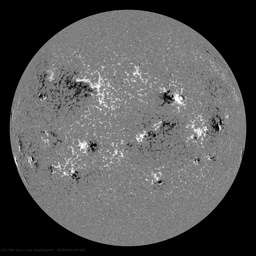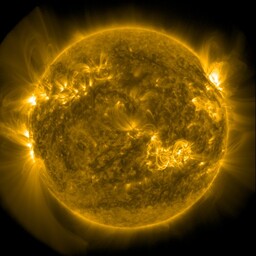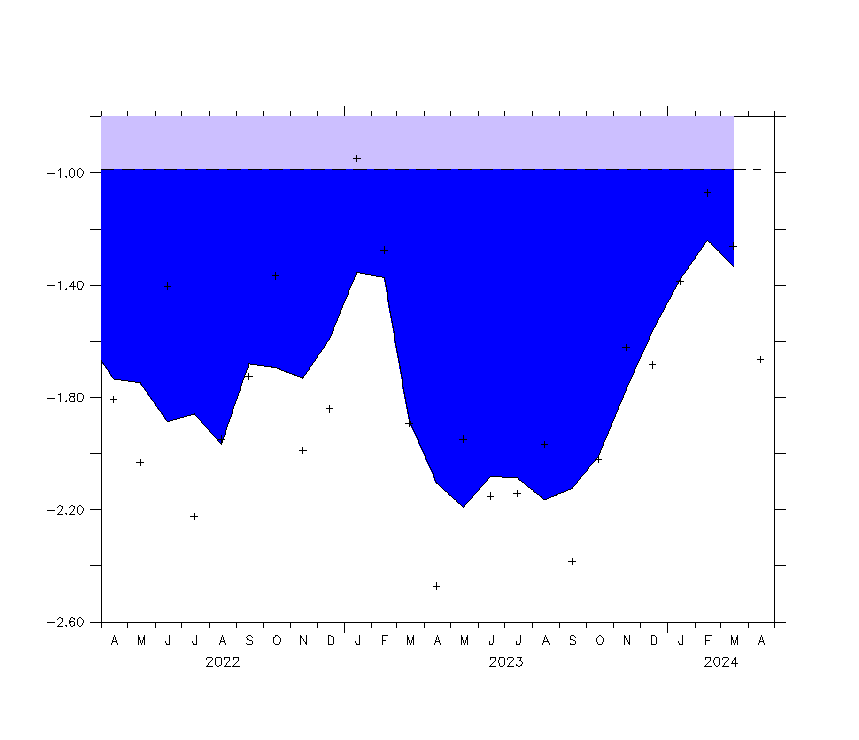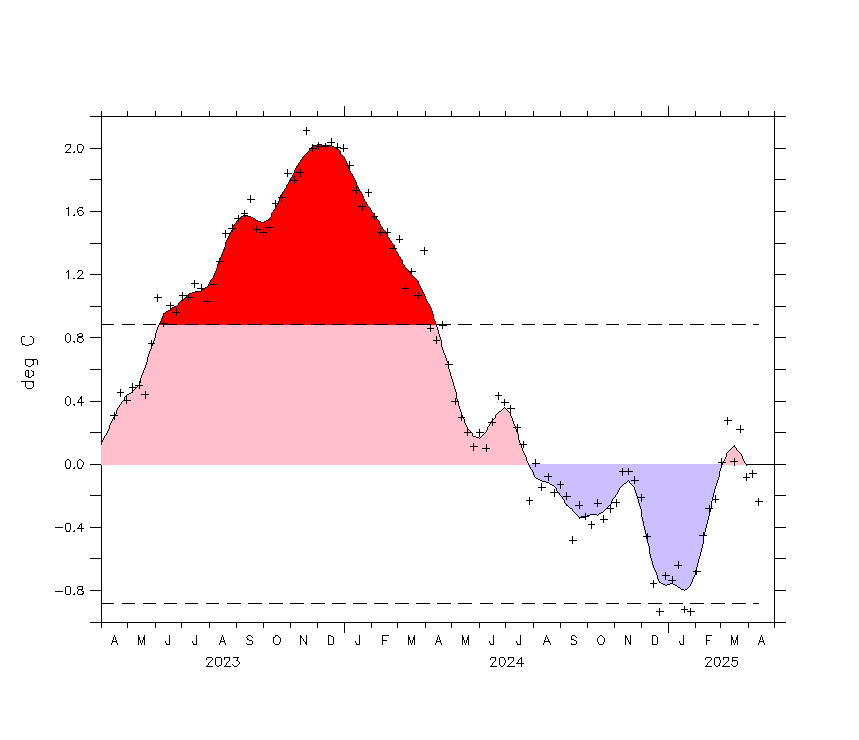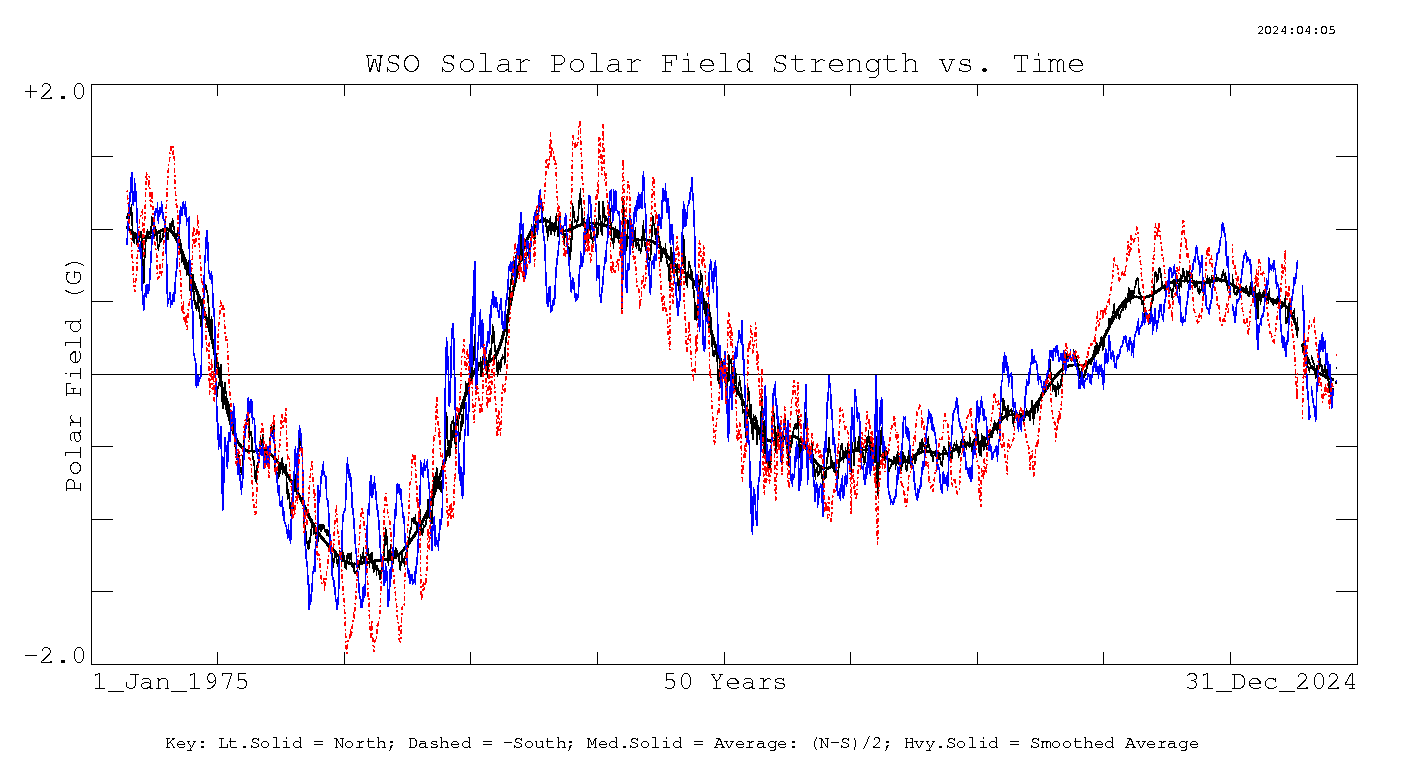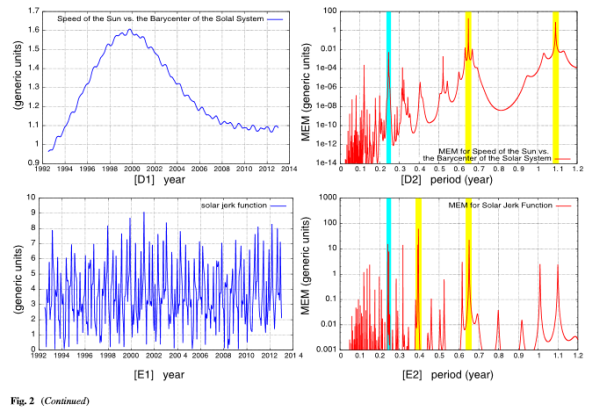Abstract
The time series of total solar irradiance (TSI) satellite observations since 1978 provided by ACRIM and PMOD TSI composites are studied. We find empirical evi-dence for planetary-induced forcing and modulation of solar activity. Power spectra and direct data pattern analysis reveal a clear signature of the 1.09-year Earth-Jupiter con- junction cycle, in particular during solar cycle 23 maximum. This appears to suggest that the Jupiter side of the Sun is slightly brighter during solar maxima. The effect is observed when the Earth crosses the Sun-Jupiter conjunction line every 1.09 years. Multiple spectral peaks are ob- served in the TSI records that are coherent with known planetary harmonics such as the spring, orbital and synodic periods among Mercury, Venus, Earth and Jupiter: the Mercury-Venus spring-tidal cycle (0.20 year); the Mercury orbital cycle (0.24 year); the Venus-Jupiter spring-tidal cycle (0.32 year); the Venus-Mercury synodic cycle (0.40 year); the Venus-Jupiter synodic cycle (0.65 year); and the Venus- Earth spring tidal cycle (0.80 year). Strong evidence is also found for a 0.5-year TSI cycle that could be driven by the Earth’s crossing the solar equatorial plane twice a year and may indicate a latitudinal solar-luminosity asymmetry. Be- cause both spring and synodic planetary cycles appear to be present and the amplitudes of their TSI signatures appear enhanced during sunspot cycle maxima, we conjecture that on annual and sub-annual scales both gravitational and electro-magnetic planet-sun interactions and internal non- linear feedbacks may be modulating solar activity. Gravitational tidal forces should mostly stress spring cycles while electro-magnetic forces could be linked to the solar wobbling dynamics, and would mostly stress the synodic cycles. The observed statistical coherence between the TSI records and the planetary harmonics is confirmed by three alternative tests.
And:
Scafetta, N., Solar and planetary oscillation control on climate change: hindcast, forecast and a comparison with the CMIP5 GCMs. Energy & Environment: special volume ‘Mechanisms of Climate Change and the AGW Concept: a critical review’. Vol. 24 (3&4), Page 455-496 (2013). DOI 10.1260/0958-305X.24.3-4.455 where Nicola once again challenges the IPCC models and outperforms them in leaps and bounds.
http://arxiv.org/pdf/1307.3706v1.pdf
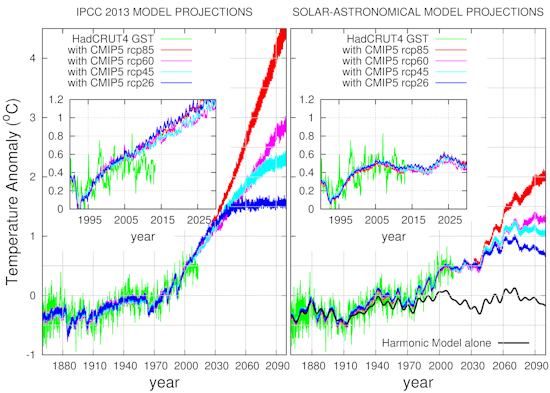
Nicola will continue to challenge mainstream solar science along with the rest of the team that is gaining momentum in this exciting newly rejuvenated field.
Abstract
Abstract Global surface temperature records (e.g. HadCRUT4) since 1850 are characterized by climatic oscillations synchronous with specific solar, planetary and lunar harmonics superimposed on a background warming modulation. The latter is related to a long millennial solar oscillation and to changes in the chemical composition of the atmosphere (e.g. aerosol and greenhouse gases). However, current general circulation climate models, e.g. the CMIP5 GCMs, to be used in the AR5 IPCC Report in 2013, fail to reconstruct the observed climatic oscillations. As an alternate, an empirical model is proposed that uses: (1) a specific set of decadal, multidecadal, secular and millennial astronomic harmonics to simulate the observed climatic oscillations; (2) a 0.45 attenuation of the GCM ensemble mean simulations to model the anthropogenic and volcano forcing effects. The proposed empirical model outperforms the GCMs by better hind-casting the observed 1850-2012 climatic patterns. It is found that: (1) about 50-60% of the warming observed since 1850 and since 1970 was induced by natural oscillations likely resulting from harmonic astronomical forcings that are not yet included in the GCMs; (2) a 2000-2040 approximately steady projected temperature; (3) a 2000-2100 projected warming ranging between 0.3 o C and 1.6 o C, which is significantly lower than the IPCC GCM ensemble mean projected warming of 1.1 o C to 4.1 o C; ; (4) an equilibrium climate sensitivity to CO 2 doubling centered in 1.35 o C and varying between 0.9 o C and 2.0 o C.
A new paper by McCracken et al is also of interest:
McCracken, K.G.; Beer, J.; Steinhilber, F.; Abreu, J. (2013). A phenomenological study of the cosmic ray variations over the past 9400 years, and their implications regarding solar activity and the solar dynamo. Solar Physics 286(2), 609-627.
Abstract
Two 9400-year long 10Be data records from the Arctic and Antarctic and a 14C record of equal length were used to investigate the periodicities in the cosmic radiation incident on Earth throughout the past 9400 years. Fifteen significant periodicities between 40 and 2320 years are observed in the 10Be and 14C records, there being close agreement between the periodicities in each record. We found that the periodic variations in the galactic cosmic radiation are the primary cause for periods < 250 years, with minor contributions of terrestrial origin possible > 250 years. The spectral line for the Gleissberg (87-year) periodicity is narrow, indicating a stability of ≈ 0.5 %. The 9400-year record contains 26 Grand Minima (GM) similar to the Maunder Minimum, most of which occurred as sequences of 2 - 7 GM with intervals of 800 - 1200 years in between, in which there were no GM. The intervals between the GM sequences are characterised by high values of the modulation function. Periodicities < 150 years are observed in both the GM intervals and the intervals in between. The longer-period variations such as the de Vries (208-year) cycle have high amplitudes during the GM sequences and are undetectable in between. There are three harmonically related pairs of periodicities (65 and 130 years), (75 and 150 years), and (104 and 208 years). The long periodicities at 350, 510, and 708 years closely approximate 4, 6, and 8 times the Gleissberg period (87 years). The well-established properties of cosmic-ray modulation theory and the known dependence of the heliospheric magnetic field on the solar magnetic fields lead us to speculate that the periodicities evident in the paleo-cosmic-ray record are also present in the solar magnetic fields and in the solar dynamo. The stable, narrow natures of the Gleissberg and other periodicities suggest that there is a strong "frequency control" in the solar dynamo, in strong contrast to the variable nature (8 - 15 years) of the Schwabe (11-year) solar cycle.
Note once again some high profile players are involved in this paper, hopefully I will have a full version of this paper soon, as there is a chance some of it may pertain to my own area of Planetary Science.


